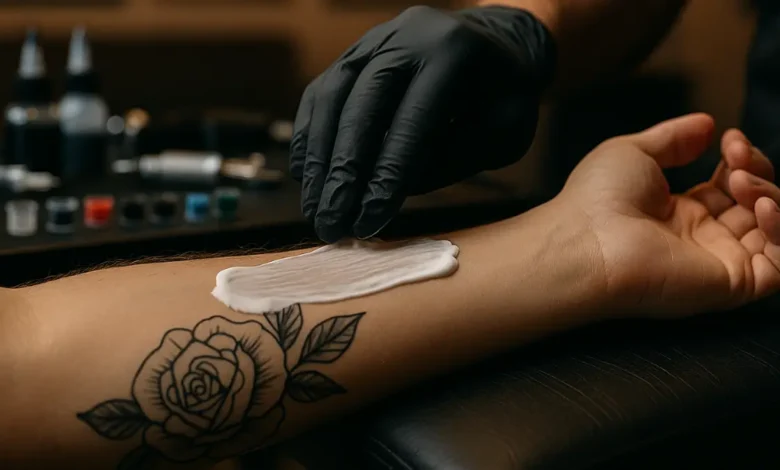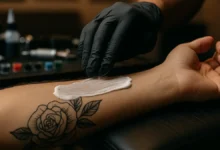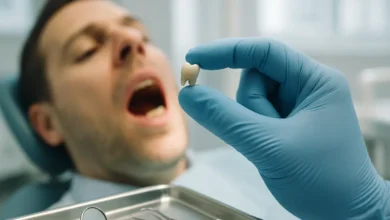Best Numbing Cream for Tattoos – Expert Guide to Pain-Free Ink

Discover how numbing cream for tattoos reduces pain, how to use it safely, and tips for the best tattoo experience with comfort and confidence.
Getting a tattoo can be a thrilling experience, but it also comes with one unavoidable element — pain. While everyone’s pain tolerance is different, many people look for ways to make the process more comfortable. That’s where numbing cream for tattoos comes in. It’s not a miracle, but it can definitely take the edge off.
In this complete guide, you’ll learn how tattoo numbing creams work, when and how to use them, the best ways to apply them, and the pros and cons of using one before your next tattoo session. Written with insight and experience, this guide breaks down everything you need to know so you can go into your appointment feeling confident and prepared.
Understanding Numbing Cream for Tattoos
Numbing cream for tattoos is a topical anesthetic designed to temporarily reduce the pain sensation when the tattoo needle penetrates the skin. It doesn’t block all feeling, but it dulls the nerves enough that the sharp sting of each puncture becomes far more tolerable.
These creams are most commonly formulated with ingredients like lidocaine, prilocaine, benzocaine, or tetracaine — all of which act by blocking pain signals from traveling through the nerve endings in your skin. When applied correctly, they can numb the area for an hour or more, making it much easier to sit through longer tattoo sessions or sensitive areas like ribs, feet, or inner arms.
In short, numbing cream for tattoos doesn’t erase the pain, but it takes the “bite” out of it. It allows you to focus more on the artistry and less on the discomfort.
How Tattoo Numbing Cream Works
The science behind numbing cream is simple but fascinating. The skin’s nerve endings send pain signals to the brain through sodium channels in nerve cells. Numbing creams temporarily block these sodium channels, preventing pain signals from transmitting effectively.
When you apply a numbing cream to your skin, its active ingredients absorb into the top layers — the epidermis and dermis — creating a local anesthetic effect. Within 30 to 90 minutes, you’ll feel a tingling or cooling sensation, followed by numbness. The area becomes desensitized, which makes the tattoo process far less painful.
However, since tattoo needles reach slightly deeper than the surface layer, some mild sensations still get through. You may still feel vibration or dull pressure, but the sharp, stinging pain is significantly reduced. The numbing sensation usually lasts from one to three hours, depending on the cream’s strength and how your skin absorbs it.
Why People Use Numbing Cream for Tattoos
There are many good reasons why people reach for numbing cream before getting inked. For some, it’s about comfort; for others, it’s a matter of endurance.
Sensitive Areas
Certain parts of the body — like the ribs, sternum, ankles, knees, and inner biceps — are more sensitive due to thinner skin and closer proximity to bone. Tattooing these areas can be extremely painful. Using a numbing cream helps take away the sharp sting, making the session bearable and allowing the artist to work smoothly without interruptions.
Long Sessions
If you’re getting a large back piece, sleeve, or detailed design that takes several hours, fatigue and pain can build up. A numbing cream gives you relief during the most intense parts of the session, helping you stay calm and focused.
Anxiety and Low Pain Tolerance
Even if you’re not afraid of needles, the thought of constant pricking can cause anxiety. A good numbing cream helps reduce not just physical pain but also the mental stress that comes with anticipation. It allows you to stay relaxed, breathe easily, and fully enjoy the creative process.
Choosing the Right Numbing Cream
Not all numbing creams are equal. Some work exceptionally well, while others barely make a difference. Choosing the right one depends on a few key factors.
Active Ingredients
The most effective creams contain lidocaine, benzocaine, or prilocaine. Lidocaine is the most common because it’s safe and reliable for most skin types. The percentage of these ingredients typically determines the cream’s strength — stronger formulas provide deeper numbing but should be used carefully to avoid side effects.
Texture and Absorption
A good numbing cream for tattoos should be smooth, non-greasy, and quick-absorbing. Heavy, oily creams can interfere with stencil placement or make it difficult for ink to settle properly. Choose a formula that penetrates well without leaving residue.
Duration and Strength
Check how long the cream lasts once applied. Most numbing creams offer between one to three hours of numbness. Some premium options last longer, which is helpful for extended tattoo sessions.
Reputation and Safety
Stick to reputable brands that are dermatologically tested or approved by professionals. Avoid sketchy, unverified products that make unrealistic claims. Always read labels, instructions, and warnings before use.
How to Apply Numbing Cream Properly
Correct application makes all the difference. Even the best numbing cream won’t work well if it’s applied the wrong way.
Start by washing and drying the skin thoroughly with mild soap and warm water. This removes oil, dirt, and dead skin, helping the cream absorb better.
Next, apply a generous, even layer of the numbing cream over the area to be tattooed. Don’t rub it in like lotion — instead, leave a visible layer sitting on top of the skin. Then, cover it with plastic wrap (or cling film). The wrap prevents evaporation and helps the skin absorb the active ingredients more deeply.
Let the cream sit for about 45 to 60 minutes before your session. The exact timing depends on the product, so always follow the directions on the label. When it’s time to start tattooing, remove the wrap, gently wipe off the excess cream, and clean the skin again. The area should feel comfortably numb but not swollen or irritated.
Avoid overusing the cream or leaving it on for too long, as this can lead to side effects like redness, swelling, or a burning sensation.
Benefits of Using Numbing Cream for Tattoos
Using a numbing cream has more than just pain-reducing benefits. It can actually improve your overall tattoo experience and even help your artist perform better.
More Comfort, Less Stress
When pain is minimized, you naturally stay more relaxed. You can breathe evenly, stay still, and enjoy watching your tattoo come to life. This calmness also helps your artist maintain precision and smooth linework.
Extended Endurance
Without numbing cream, long sessions can feel unbearable after a few hours. Fatigue sets in, pain amplifies, and your skin becomes more reactive. Numbing cream buys you time, allowing you to finish more of the design in one sitting.
Better Focus for Both Artist and Client
Pain causes involuntary movement. Even the most determined clients can twitch or flinch when pain spikes. A numbed client stays steady, helping the artist maintain clean lines and perfect shading. The entire experience becomes more productive and less stressful for both parties.
Drawbacks and Risks of Tattoo Numbing Cream
While numbing creams are helpful, they’re not flawless. Being aware of their drawbacks helps you use them responsibly.
Temporary Effect
The numbing sensation wears off after a couple of hours. If your tattoo takes longer than that, you’ll start feeling the pain midway. That’s why timing and planning are so important.
Skin Reactions
Some people experience irritation, redness, or minor swelling after using numbing cream. In rare cases, allergic reactions can occur. Always do a small patch test at least a day before your tattoo appointment to make sure your skin tolerates the product.
Interference with Ink or Stencil
When overapplied or not fully cleaned off, some creams can make the skin too slick, affecting stencil adhesion or ink penetration. That’s why professionals insist on removing all residue before starting.
Overuse Risks
Applying too much or covering large areas can lead to excessive absorption into the bloodstream. This can cause dizziness, irregular heartbeat, or in extreme cases, toxicity. Always use the recommended amount and never exceed application time.
Safety Tips for Using Tattoo Numbing Cream
- Read and follow all product instructions carefully.
- Do a patch test at least 24 hours before your session.
- Don’t apply the cream to broken, irritated, or freshly shaved skin.
- Never use excessive amounts or apply over very large body areas.
- Avoid using multiple numbing products together.
- Remove the cream completely before tattooing begins.
- Inform your tattoo artist that you’re using numbing cream beforehand.
- Stop using immediately if you feel dizziness, numb lips, or irregular heartbeat.
When used correctly, numbing creams are safe for most people, but the key is moderation and proper application.
Maximizing the Effect of Numbing Cream
If you want the cream to work its best, preparation and timing are everything. Here are some expert tips to get the most out of it.
- Apply at least 45 minutes before your appointment so it can fully absorb.
- Use plastic wrap to trap heat and moisture — this activates the ingredients.
- Stay relaxed during application; tense skin reduces absorption.
- Drink water and keep your body hydrated for better skin response.
- Don’t scratch or rub the area while waiting; let the cream do the work.
- Coordinate with your artist for timing so you start while the area is fully numb.
These small adjustments can make a big difference in your comfort level throughout the tattoo process.
Realistic Expectations
It’s important to understand that numbing cream reduces pain — it doesn’t eliminate it. You might still feel vibrations, dull pressure, or slight pinches, especially during shading or deep work. The goal is comfort, not total numbness.
Everyone’s skin absorbs anesthetics differently, so results vary from person to person. Some feel complete numbness; others feel only partial relief. Regardless, a well-chosen and properly applied numbing cream will make the experience significantly more tolerable.
Frequently Asked Questions
How long should I leave numbing cream on before tattooing?
Most numbing creams need between 45 and 60 minutes to reach full effect. Always follow the instructions on the label for best results.
Can numbing cream ruin a tattoo?
No, when used correctly and fully wiped off before tattooing, it won’t affect ink or healing. Problems only arise if the cream isn’t removed properly or used excessively.
How long does the numbness last?
The effect usually lasts between one and three hours, depending on the product’s strength, your skin type, and how well it’s absorbed.
Can I reapply numbing cream during the tattoo?
Not usually. Once the skin is broken, it’s not safe to reapply. Some artists may use topical sprays during breaks, but this should be done cautiously and under professional supervision.
Is numbing cream safe for everyone?
Most people can use it safely, but those with allergies to local anesthetics, heart conditions, or liver problems should consult a doctor before use.
Will it completely eliminate pain?
No, it will significantly reduce discomfort, but you’ll still feel some sensation. The goal is to make it manageable, not to remove it entirely.
Does numbing cream affect healing?
When properly applied and cleaned off before tattooing, numbing cream doesn’t interfere with healing. Post-tattoo care matters far more for how your tattoo recovers.
Conclusion
Numbing cream for tattoos is a helpful tool, not a magic wand. It offers relief, boosts comfort, and allows you to enjoy your tattoo experience without excessive pain or anxiety. When used responsibly, it enhances both performance and endurance during a session.
Always choose quality products, follow application guidelines, and communicate openly with your tattoo artist. With proper care, numbing cream can turn what would have been a painful process into a calm, confident experience — letting you focus on what really matters: the art itself.





